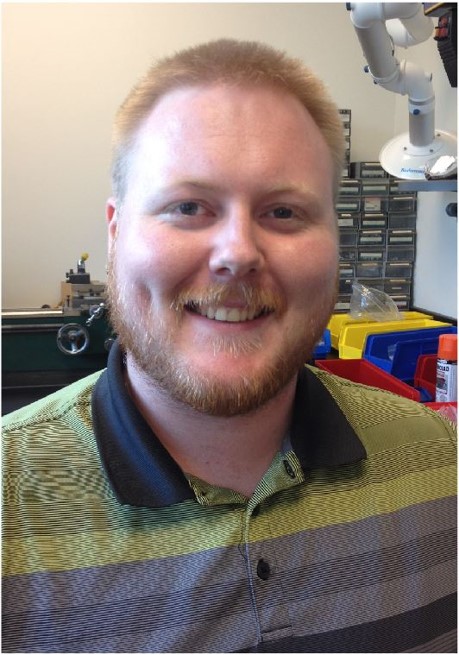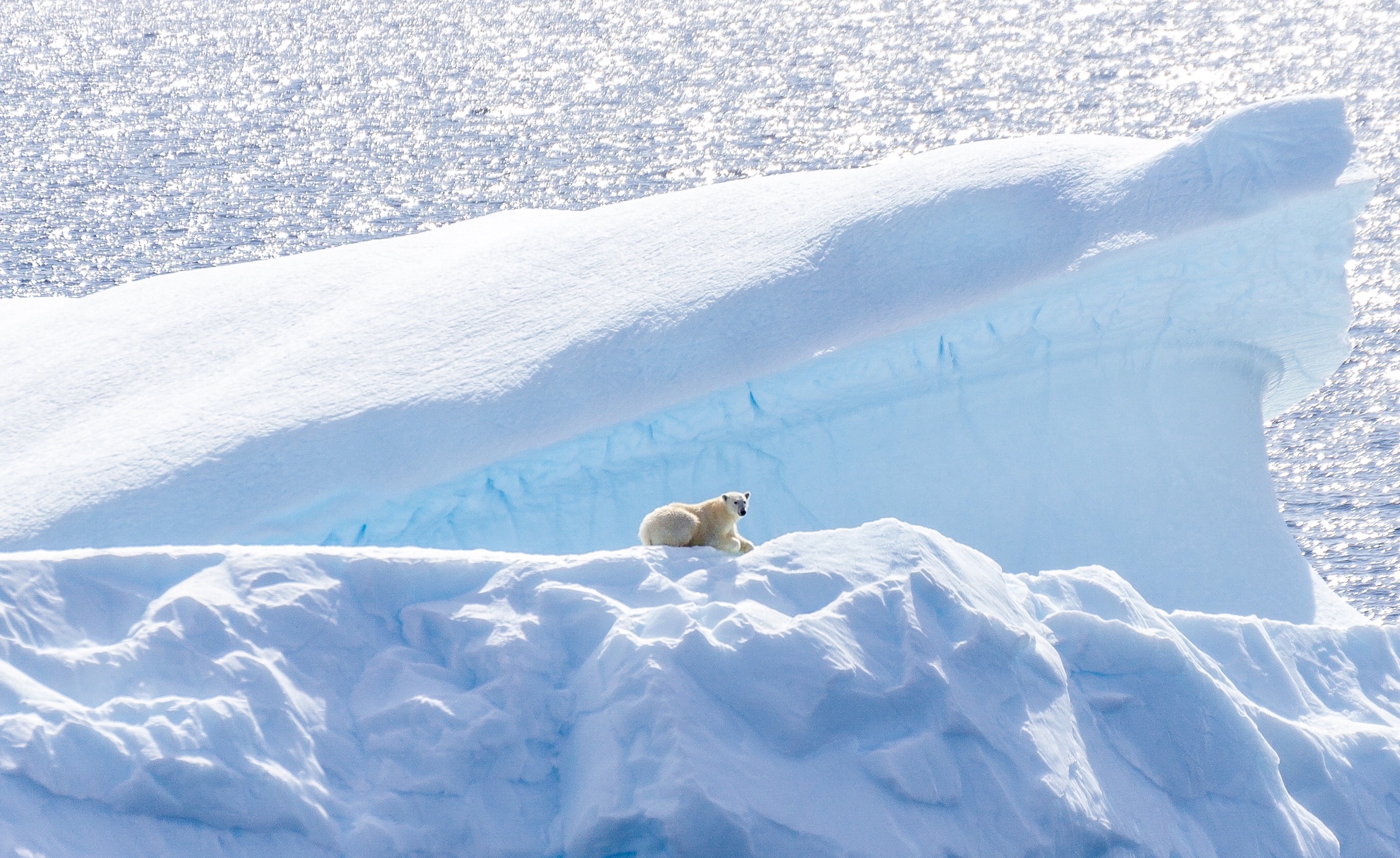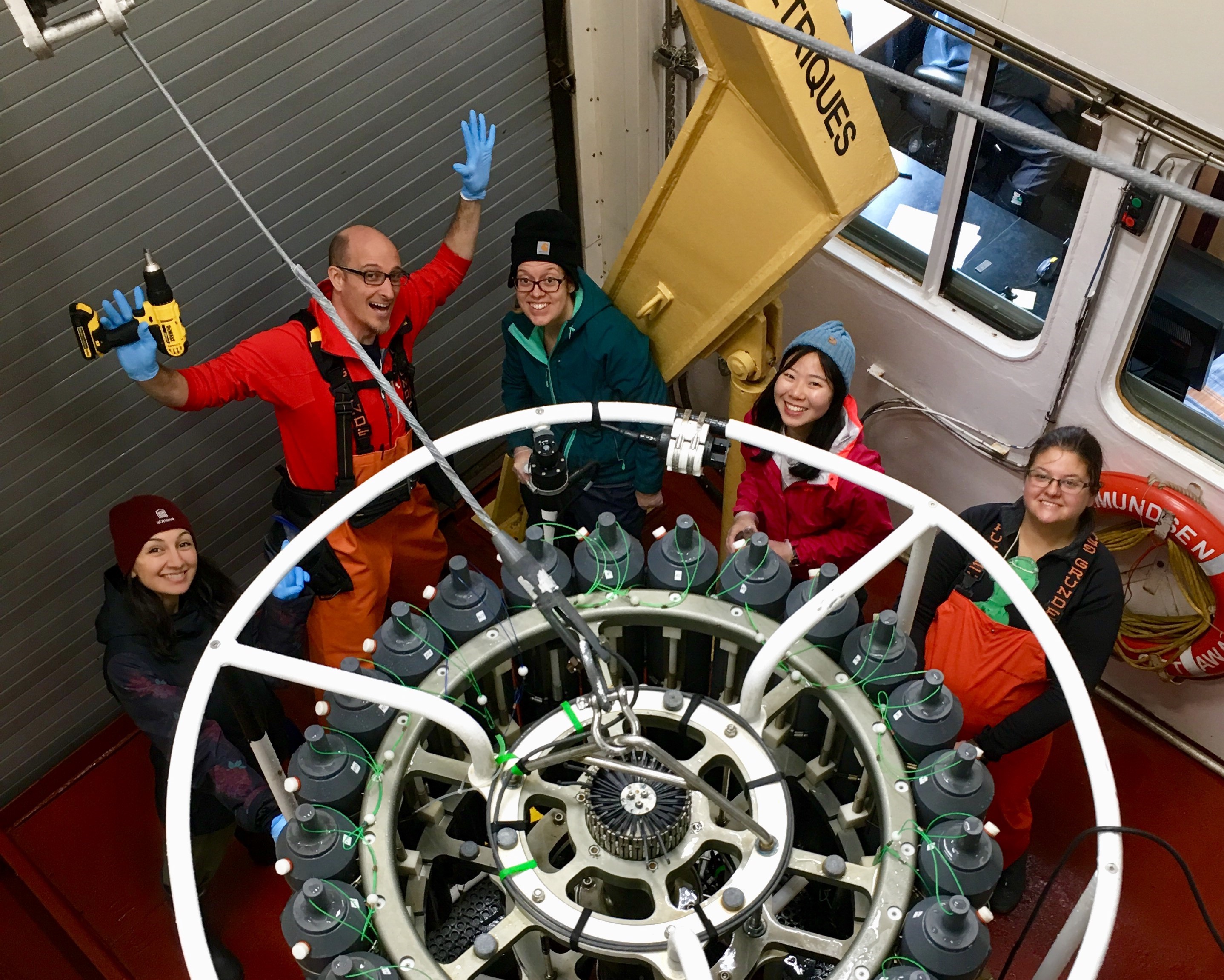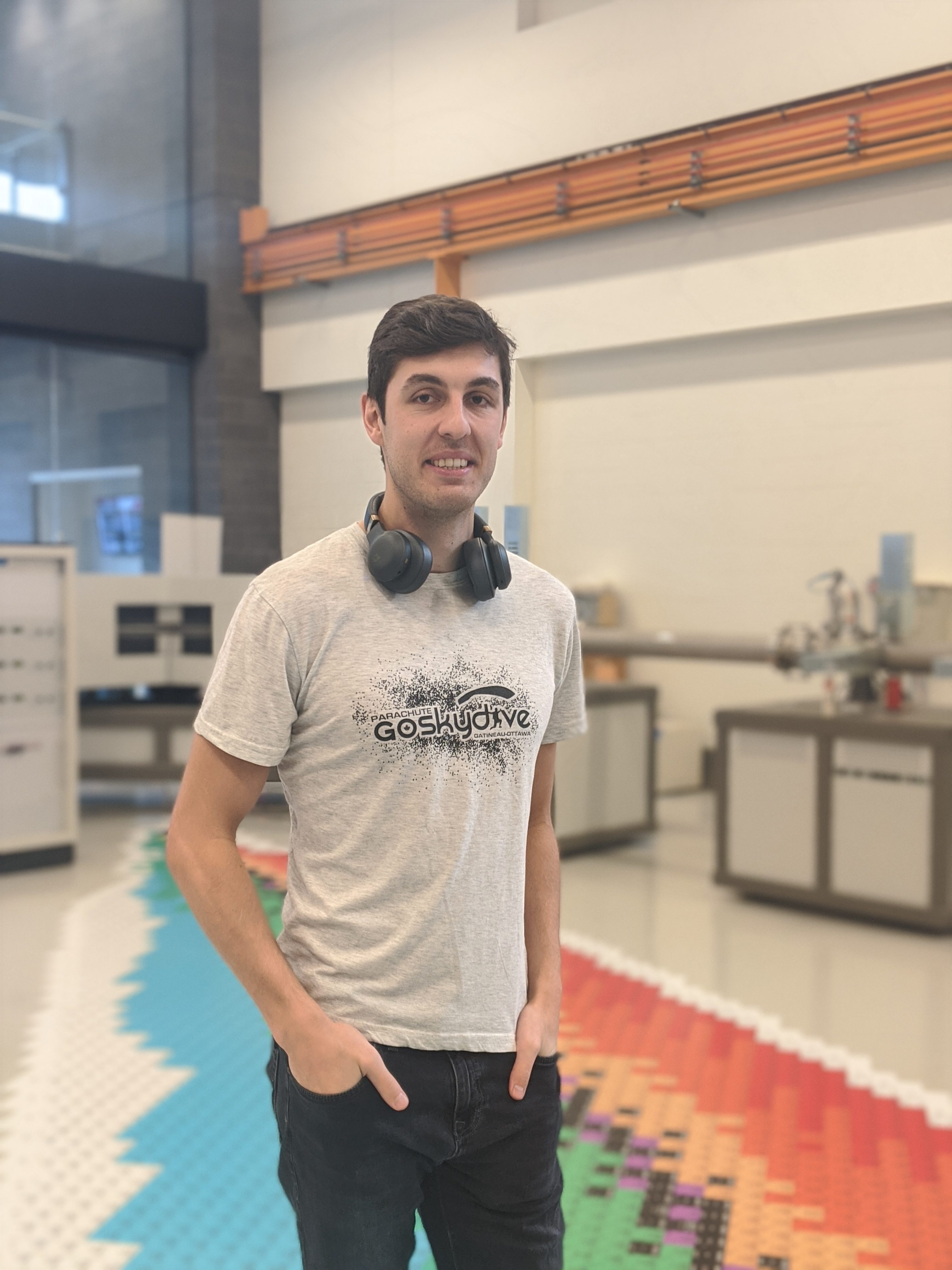Research features
Learn more about some recently completed research at the André E. Lalonde AMS Laboratory.
Features
Pre-nuclear level of 129I in environment (Subsurface, Groundwater and Minerals)
Hamed Mozafarishamsi
Iodine is an anion and is mobilized from nuclear waste in aqueous environments. Among all of iodine’s isotopes, 129I has the longest half-life. The objective of this research will be the determination of the natural abundance of 129I in four different environments.
High background geological site (Cigar Lake Natural Analog): Determination of 129I in natural analogs is important because it can reduce the uncertainty of long-term predictions about the mobility of 129I in a deep geological repository (DGR) system. The Canadian Nuclear Safety Commission (CNSC) is interested in Cigar Lake to investigate the mobility of 129I in a high background geological site. Cigar Lake is considered a high background site due to the high uranium concentrations (up to 662,000 ppm). 129I is in secular equilibrium with its parent (238U). As such, the measured value will be compared with predicted secular equilibrium values in order to interpret the results of 129I measurement.
Low background geological site (Bruce Site): The Bruce Nuclear Site (Kindardine, ON) is one of the areas that Ontario Power Generation (OPG) is considering for a DGR to store low and intermediate level radioactive waste. This site allows us to explore background levels of 129I in a pristine environment. Compared to Cigar Lake, Bruce site is considered a low background geological site as the uranium concentrations in this area vary from 1 to 5 ppm.
Low background surficial site (Elmvale artesian flows): Elmvale artesian wells are considered as a low background surficial site to find the background level of 129I in the environment. The concentration of tritium in this artesian flow is zero, therefore this site is a good candidate for measuring pre-nuclear levels of 129I. In addition we will also use 129I as a tracer to understand the regional hydrology.
Iodine-Rich Minerals (Iodargyrie and Marshite): Iodine rich minerals like Iodargyrite (AgI) and Marshite (CuI) can be used to measure 129I when the ore formed. We can measure the background level of 129I in these minerals with the least amount of chemical preparation (reducing potential contamination) and are measured directly with AMS.
Hamed is a PhD student at the University of Ottawa studying earth and environmental sciences under the supervision of Dr. Ian Clark and Dr. Matthew Herod. He completed his masters in environmental engineering at the University of Tehran in 2013.

Isobar separation for anions in accelerator mass spectrometry studies
Erin Flannigan
The presence of unwanted isobars (elements with the same atomic weight) in accelerator mass spectrometry (AMS) limit its sensitivity. Negative ion sources are used to remove atomic isobars with unstable negative ions (e.g. 14N in 14C measurements) and a gas-stripper in the accelerator terminal dissociates molecular isobars (e.g. 12CH2 or 13CH in 14C measurements). In high energy AMS systems, foils, complete stripping, or gas-filled magnets can be used to eliminate additional light element isobars. However, for smaller AMS systems, such as the Lalonde accelerator, separating many abundant atomic isobars remains a challenge.
My work will integrate the Isobar Separator for Anions (ISA), a radiofrequency quadrupole reaction cell system, into a second injection line of the AEL-AMS system. This innovative isobar separation method will provide a compact, affordable way for AMS laboratories to measure a larger variety of radioisotopes by reducing or eliminating the interference of abundant isobars. This is accomplished using a gas-filled cell, in which the gas is carefully chosen to react preferentially with the interfering isobar. Using the ion-optics simulation software, SIMION, to guide the choice of applied fields along the ion path, I am optimizing the characteristics of the beam and so producing the highest ion transmission through the ISA.
Once the beam has been experimentally characterized and transmission has been optimized, the ISA will be used in the measurement of many isotopes previously unstudied at the Lalonde AMS laboratory, including but not limited to 36Cl, 90Sr, and 135,137Cs. 36Cl is an important isotope for age determination, paleoclimate studies, and meteorite or lunar material studies, while 90Sr and 135,137Cs are found in fallout from nuclear weapons tests or nuclear accidents.
Erin is a second year PhD student studying physics at the University of Ottawa under the supervision of Dr. William Kieser. She previously completed her BSc in chemical physics and MSc in physics at the University of Guelph.

Ion Sourcery: When counting atoms, every atom counts!
Collin Tiessen
The origin of accelerator mass spectrometry (AMS) and its success as a method for 14C (and other isotopic) dating traces back to the discovery that it’s ubiquitous isobar, 14N, does not produce stable negative ions. Since then, the cesium sputter ion source has been the method of choice for extracting these negative ions. Samples from all over the world, used for all kinds of research, are chemically prepared and pressed into identical targets which are injected individually into the ion source for extraction into the accelerator. Inside the ion source, positively charged cesium ions are accelerated by an electric potential difference until they collide with the sample. Carbon atoms within the sample are liberated and obtain an extra electron as they pass through a thin layer of cesium on the surface of the target. The resulting negative ion beam is accelerated by the same potential difference and injected into the accelerator.
Ions in the beam that stray too far off the beam axis on their way to the detector will collide with the walls of the accelerator and be lost. For my thesis, I am using Integrated Engineering Software’s Lorentz 2E ion trajectory simulation software to simulate both the positive and negative ion beams, including the space charge effects of each beam on the other. From this, a better understanding of the electrodynamics within the ion source may be achieved and an improved model can be designed, built, and tested. An optimized source would increase sample throughput and potentially improve the efficiency of the use of precious sample material.
Collin is a doctoral student in physics at the University of Ottawa specializing in negative ion source development with Dr. William Kieser. During his studies, he has embarked on three summer internships: one to NASA’s Jet Propulsion Laboratory in Pasadena, California, USA and two to the Dresden Accelerator Mass Spectrometry Lab at Helmholtz-Zentrum Dresden-Rossendorf in Dresden, Germany.

Radiocarbon and stable carbon isotopic measurements of dissolved inorganic carbon (DIC) in Baffin Bay
Sara Zeidan
The oceans store around half of the carbon dioxide (CO2) emitted into the atmosphere from fossil fuels as dissolved inorganic carbon (DIC), holding ~38,000 GtC and making it the largest marine carbon reservoir. The Arctic Ocean is a region that is both chemically and ecologically sensitive, and little is known about the impacts of climate change on the marine carbon cycle of this region and on atmospheric CO2). Baffin Bay is an ocean basin that feeds cold, fresh surface water into the Labrador Sea, critical for deep water formation and the ‘engine’ driving global deep ocean circulation. The residence time of water in Baffin Bay remains an area of scientific debate, with estimated ventilation times ranging from 77 to 1,450 years.

DIC samples collected throughout Baffin Bay will be measured for 14C and 13C, both powerful tools used to constrain physical oceanographic parameters and better understand the marine carbon cycle. Based on these measurements we hypothesize that 1) Estimated residence time of deep water in Baffin Bay will be less than 1,450 2) Bomb and anthropogenic 14C signatures will have penetrated these deepest Baffin Bay waters 3) Dual 14C, 13C tracer approach will quantify Atlantic, Arctic and Pacific water end member contributions to Baffin Bay deep water. Seawater samples were collected by a CTD rosette system on CCGS Amundsen in July 2019 throughout Baffin Bay. Samples were poisoned with saturated HgCl2, and will be extracted and analyzed by accelerator mass spectrometry (AMS) at the University of Ottawa. This work will provide a greater understanding of the Arctic marine carbon cycle, further constrain the physical circulation of Baffin Bay, and quantify the amount of sequestered anthropogenic carbon.

Sara is currently a first year graduate student at the University of Ottawa studying Earth Sciences with a specialization in Chemical and Environmental Toxicology under the supervision of Dr. Brett Walker.

Source and age of CO2 emissions in the riparian zone adjacent to farm fields
David Zal
The carbon cycle is comprised of 3 main reservoirs: the atmosphere, oceans and the terrestrial biosphere, in which carbon cycles through. This study looks at the contribution of soil respiration to the carbon cycle. The soil cores were collected outside of Ottawa from farm fields and the adjacent riparian zone. The atmosphere currently holds around 800 gigatons of carbon which equates to around 400 ppm of CO2. It is crucial to understand respiration of sequestered carbon which is released as CO2 back into the atmosphere. As this allows for the calculation of a rate at which the sequestered carbon is released as CO2 by respiration.
“I truly enjoy doing research, as there are so many questions one can ask and so many possibilities to answer them, while learning something new each and every day.”
The objectives of this project are to 1) determine the age of CO2 that is being released from agricultural soils to the atmosphere, 2) determine the impact that dredging of the riparian zone has on CO2 emission of the soil and 3) determine whether dredging of the riparian zone releases older CO2 gas. It is predicted that the sites that have not been disturbed will release less and younger CO2 in comparison to disturbed sites. The microcosm incubations of soil form depth profiles show respiration of carbon sequestered subsequent to and older than 1963, with the respired CO2 from the soil cores becoming older with depth. The stable isotope, 13C, demonstrates that all of this carbon originates from C3 vegetation. Further research will better define the age of soil emissions and source of CO2 respired.
